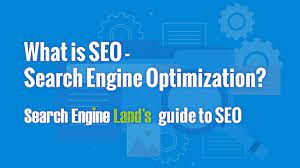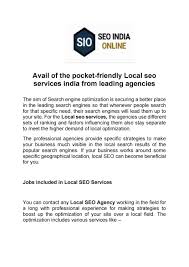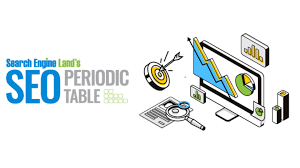The Power of SEO and SEM Marketing
In the ever-evolving landscape of digital marketing, two key strategies stand out for their effectiveness in boosting online visibility and driving traffic to websites: Search Engine Optimization (SEO) and Search Engine Marketing (SEM). While both aim to improve a website’s performance in search engine results pages (SERPs), they utilise different approaches to achieve this goal.
Search Engine Optimization (SEO)
SEO is a process that involves optimising various elements of a website to increase its organic visibility in search engines. This includes on-page factors such as keyword research, content creation, meta tags optimisation, and internal linking, as well as off-page factors like link building and social signals. By adhering to best practices and staying updated with search engine algorithms, websites can improve their rankings for relevant keywords and attract more organic traffic.
Search Engine Marketing (SEM)
SEM encompasses paid advertising strategies to promote websites in search engine results. This typically involves Pay-Per-Click (PPC) campaigns where advertisers bid on keywords relevant to their target audience. Ads are displayed prominently in SERPs, above organic listings, providing immediate visibility to users searching for specific terms. SEM allows businesses to reach a highly targeted audience and drive traffic to their websites quickly.
The Synergy of SEO and SEM
While SEO focuses on long-term organic growth, SEM offers immediate results through paid advertising. When used together strategically, these two approaches can complement each other effectively. For instance, using PPC data can inform keyword targeting for SEO efforts, while strong organic rankings can reduce reliance on paid ads over time. The synergy between SEO and SEM can lead to enhanced visibility, increased website traffic, and improved conversion rates.
Conclusion
SEO and SEM are powerful tools in the digital marketer’s arsenal, each offering unique benefits for improving online presence and driving business growth. By understanding the nuances of both strategies and utilising them in tandem, businesses can maximise their reach in search engine results and stay ahead of the competition in today’s competitive online landscape.
Eight Essential Tips for Enhancing Your SEO and SEM Marketing Strategies
- 1. Conduct keyword research to identify relevant search terms for your target audience.
- 2. Optimise your website’s meta tags, headings, and content with targeted keywords.
- 3. Create high-quality content that is valuable and engaging for users.
- 4. Build backlinks from reputable websites to improve your site’s authority and ranking.
- 5. Use social media platforms to promote your content and engage with your audience.
- 6. Monitor your website’s performance using tools like Google Analytics to track traffic and user behaviour.
- 7. Stay updated on SEO and SEM trends to adapt your strategies accordingly.
- 8. Test different strategies, measure results, and make data-driven decisions to improve your marketing efforts.
1. Conduct keyword research to identify relevant search terms for your target audience.
Conducting thorough keyword research is a fundamental step in SEO and SEM marketing strategies. By identifying relevant search terms that resonate with your target audience, you can tailor your content and advertising campaigns to align with their interests and needs. Understanding the specific keywords that users are searching for allows you to optimise your website for better visibility in search engine results pages and create targeted PPC campaigns that attract high-quality traffic. Effective keyword research forms the cornerstone of a successful digital marketing strategy, enabling businesses to connect with their audience in a meaningful way and drive valuable organic and paid traffic to their websites.
2. Optimise your website’s meta tags, headings, and content with targeted keywords.
To enhance your website’s visibility and attract relevant traffic, it is crucial to optimise key elements such as meta tags, headings, and content with targeted keywords. By strategically incorporating relevant keywords into these areas, you can signal to search engines the relevance of your website to users’ search queries. This optimisation not only improves your chances of ranking higher in search results but also ensures that your content resonates with your target audience, ultimately driving organic traffic and boosting your online presence.
3. Create high-quality content that is valuable and engaging for users.
Creating high-quality content that is valuable and engaging for users is a fundamental tip in SEO and SEM marketing. By producing content that resonates with your target audience, you not only improve your website’s visibility in search engine results but also enhance user experience and build credibility. Valuable content that addresses users’ needs and interests can attract organic traffic, encourage user engagement, and ultimately drive conversions. Investing time and effort in crafting quality content is key to establishing a strong online presence and staying competitive in the digital landscape.
4. Build backlinks from reputable websites to improve your site’s authority and ranking.
Building backlinks from reputable websites is a crucial strategy in SEO and SEM marketing. By earning links from trusted sources, you not only enhance your site’s authority but also boost its ranking in search engine results. Backlinks serve as a vote of confidence from other websites, signalling to search engines that your content is valuable and trustworthy. This can lead to increased visibility and higher organic traffic, ultimately helping your website stand out amidst the digital competition.
5. Use social media platforms to promote your content and engage with your audience.
Utilising social media platforms to promote your content and engage with your audience is a crucial tip in SEO and SEM marketing strategies. By sharing valuable content across platforms like Facebook, Twitter, Instagram, and LinkedIn, you can increase brand visibility, drive traffic to your website, and foster meaningful interactions with your target audience. Engaging with users through comments, messages, and discussions not only builds a loyal community but also signals search engines that your content is relevant and valuable, potentially boosting your organic rankings. Integrating social media into your overall marketing strategy can amplify the impact of your SEO and SEM efforts, leading to increased online presence and improved conversion rates.
6. Monitor your website’s performance using tools like Google Analytics to track traffic and user behaviour.
To enhance the effectiveness of your SEO and SEM marketing efforts, it is crucial to monitor your website’s performance consistently. Utilising tools such as Google Analytics allows you to track key metrics like website traffic, user behaviour, and conversion rates. By analysing this data, you can gain valuable insights into the performance of your campaigns, identify areas for improvement, and make data-driven decisions to optimise your online presence. Monitoring your website’s performance ensures that you stay informed about the impact of your SEO and SEM strategies, enabling you to adapt and refine your approach for maximum results.
7. Stay updated on SEO and SEM trends to adapt your strategies accordingly.
Staying informed about the latest trends in SEO and SEM is crucial for refining and adjusting your digital marketing strategies effectively. By keeping abreast of industry developments, algorithm updates, and emerging best practices, you can ensure that your SEO and SEM efforts remain relevant and competitive. Adapting your strategies in response to evolving trends will not only help you stay ahead of the curve but also maximise the impact of your campaigns in reaching and engaging your target audience.
8. Test different strategies, measure results, and make data-driven decisions to improve your marketing efforts.
To enhance the effectiveness of your SEO and SEM marketing campaigns, it is crucial to adopt a data-driven approach. Tip number 8 advises testing various strategies, measuring their outcomes, and using the insights gained to make informed decisions. By analysing data on keyword performance, ad click-through rates, website traffic, and conversion metrics, you can identify what works best for your target audience. This iterative process of testing and refining allows you to optimise your marketing efforts continuously, leading to improved results and a more impactful online presence.




